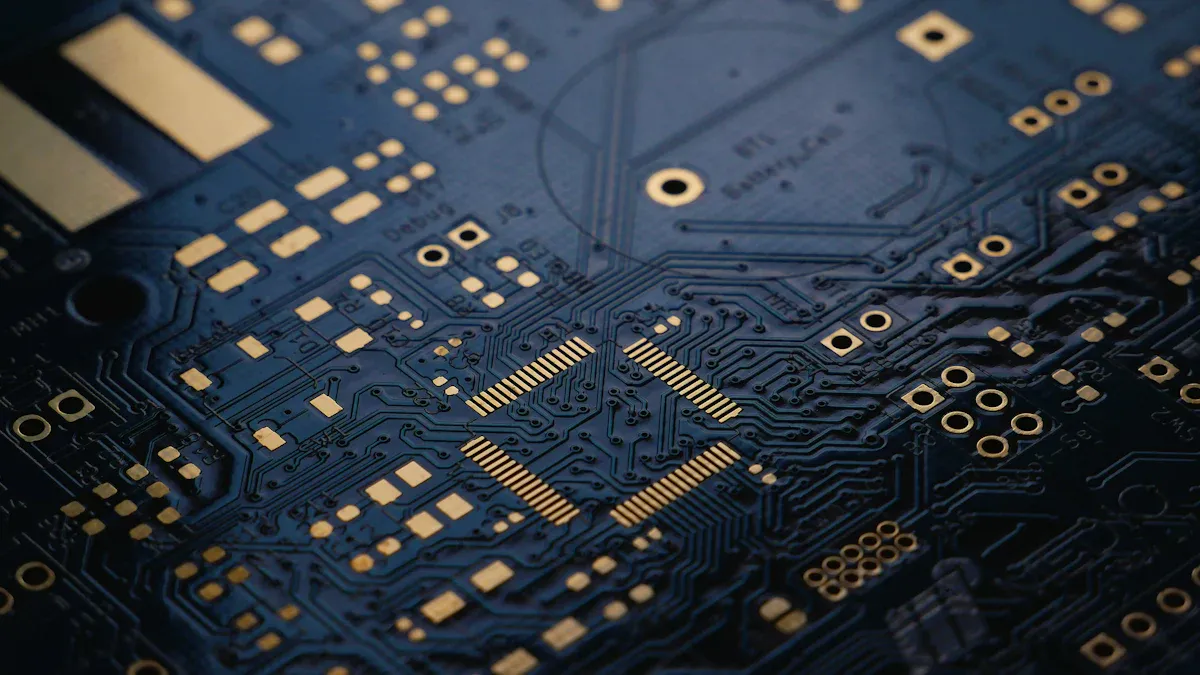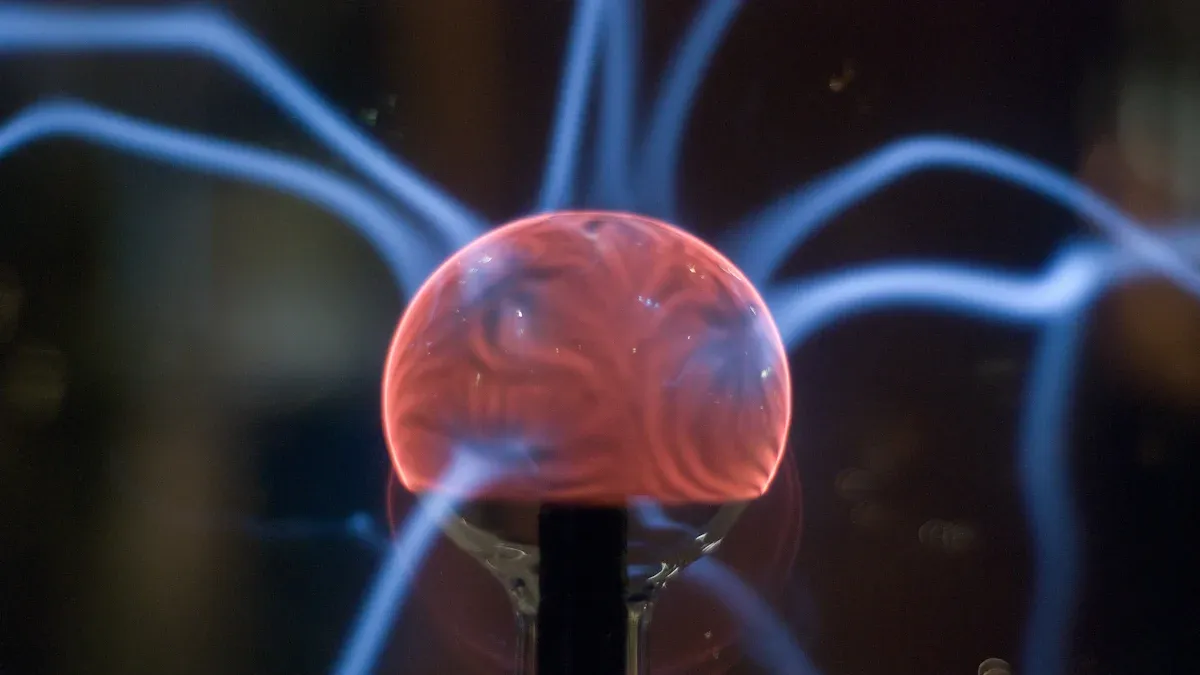The influence of static electricity on SMT assembly production

Static electricity can cause big problems in SMT assembly work. It harms delicate electronic parts and makes them less dependable. If ESD protection isn’t used, production losses can reach 22%. Also, 87% of part failures can be avoided with good ESD protection. Fixing this problem is key for steady performance.
Key Takeaways
Static electricity can harm SMT assembly, causing up to 22% losses. Using ESD protection is key to keeping products reliable.
Keeping humidity above 50% stops static from building up. This easy step improves product quality and lowers defects in SMT assembly.
Anti-static tools like wrist straps and mats protect fragile parts. These tools stop damage during handling and assembly.
Problems caused by static electricity in SMT assembly

ESD damage to components and equipment
Static electricity can harm delicate parts during SMT assembly. When it builds up and releases, it may damage electronic parts right away or later. Modern chips are very sensitive, with damage starting at just 100 volts (HBM) or 200 volts (CDM). This shows how fragile these parts are in SMT work.
Static electricity causes big problems in production. Research says ESD is behind 8% to 33% of electronics failures, costing billions yearly. ESD damage can slowly weaken PCBs, messing up circuits over time. This hidden damage often isn’t found during early tests, making it a sneaky problem.
Evidence Type | Description |
|---|---|
Frequency of ESD Damage | Up to 30% of electronic failures are caused by ESD. |
Severity of ESD Effects | ESD harms PCBs, causing slow performance issues over time. |
Latent Damage | ESD effects may not show right away but hurt circuits later. |
Stopping ESD is key to protecting parts and keeping SMT work reliable. Fixing static risks helps make production smoother and products better.
Quality control challenges in the SMT assembly process
Static electricity makes quality control harder in SMT assembly. Dust and dirt stick to charged areas, causing solder joint problems and lowering production success. Fixing these problems takes time and money, slowing down production.
Keeping humidity at 50% or more helps stop static buildup. Without good controls, static electricity can ruin SMT assembly, leading to uneven product quality.
Checking for contamination helps find and fix static-related defects.
Proper humidity levels stop static and keep production steady.
Using these steps reduces defects and keeps SMT production high-quality.
Production downtime and increased costs
ESD damage doesn’t just break parts; it also slows production. Damaged tools need fixing or replacing, stopping work and delaying shipments. These delays can hurt profits.
Static electricity also lowers SMT efficiency. ESD-caused defects need rework, wasting time and materials. This raises costs and lowers productivity. Preventing ESD is important to avoid delays and keep production running smoothly.
ESD failures cause expensive repairs and slow production.
Fixing defects adds extra labor and material costs.
Stopping ESD keeps production smooth and saves money.
By solving static electricity problems, you protect tools, avoid delays, and improve production.
Sources of static electricity in SMT production environments
Friction and material interactions in SMT processes
Static electricity happens when materials rub together in SMT work. This rubbing moves electrons, causing an imbalance called tribocharging. Common items like tape or Styrofoam cups can create thousands of volts. These high charges can harm delicate parts. Even small actions, like peeling tape, can cause static problems.
To fix this, use tools and materials that stop static. Anti-static items lower friction and prevent charge buildup. Check equipment often to find spots where static forms.
Human-induced static electricity during handling
People create static electricity while working in SMT production. Walking on floors can make over 5,000 volts from tribocharging. Sitting or standing can also create smaller charges, around 400-500 volts. If not careful, these charges can damage parts during handling.
Wear anti-static wrist straps and clothes to lower this risk. Use ESD-safe workstations to protect parts. Teach workers how to handle components safely to avoid static damage.
Environmental factors contributing to static buildup
The environment affects how much static electricity builds up. Dry air makes static worse because charges stick to surfaces easily. Dust and dirt also cling to charged areas, causing problems.
Keep humidity above 50% to reduce static risks. Air ionizers can remove charges from the air, making the workspace safer. A controlled environment helps prevent static issues in SMT production.
Tip: Check your workspace often to find and fix static problem areas.
Solutions to reduce static electricity in SMT assembly
Anti-static tools and equipment for SMT production
Using special tools helps control static electricity in SMT work. Anti-static tables, floor mats, and clothing stop static buildup. These tools make it safer to handle fragile parts. For example, wrist straps ground workers to stop static shocks. This protects delicate components from damage.
Anti-static packaging is also important for storing and moving parts. It keeps sensitive items safe from static during transport. Test your tools often to ensure they meet anti-static standards. By using these steps, you can lower static risks in production.
Environmental controls to reduce static electricity
The workspace environment affects static electricity levels. Keeping the air humid and at the right temperature helps. Dry air makes static worse, so keep humidity above 50%. Humidifiers can help maintain this level and reduce static problems.
Air ionizers are useful too. They remove charges from the air, making the workspace safer. Cleaning the area often is also important. Dust and dirt stick to charged surfaces and cause defects. A clean workspace leads to better soldering and higher product quality.
LTPCBA’s ESD protection measures for reliable SMT assembly
At LTPCBA, we use advanced tools to stop static electricity. Our workspaces have anti-static tables and special floors. These tools protect fragile parts during assembly.
We also control the environment carefully. We check humidity and temperature to stop static buildup. Anti-static packaging keeps parts safe during storage and transport.
We test our tools often to ensure they work against static. These steps protect your PCBs and improve production quality. Choosing LTPCBA means fewer static problems and better results.
Static electricity can cause problems in SMT assembly. It harms parts, messes up tools, and reduces product quality. To stop these issues, find where static comes from and fix it. LTPCBA uses special tools and controls to fight static. These steps keep production steady and protect electronics from static damage.
FAQ
What is ESD, and why does it matter in SMT assembly?
Electrostatic discharge (ESD) happens when static electricity moves between objects. It can harm fragile parts, mess up circuits, and make products less reliable in SMT assembly.
How can static electricity be stopped during SMT production?
Use anti-static tools, keep the air humid, and wear ESD-safe clothes. These steps help stop static buildup and protect parts from harm.
Why does LTPCBA care about ESD protection?
LTPCBA focuses on ESD protection to deliver top-quality PCB assembly. They use special tools, controlled workspaces, and regular checks to keep your products safe from static problems.
Tip: Check out LTPCBA for more about their ESD solutions.
See Also
Steps for Effectively Cleaning PCB Boards Post SMT Assembly
Key Technical Considerations for VIPPO PCB Boards in SMT Assembly
Choosing the Right Materials for PCB Boards in SMT Assembly
Important Considerations for Rigid-Flex PCBs During SMT Assembly
